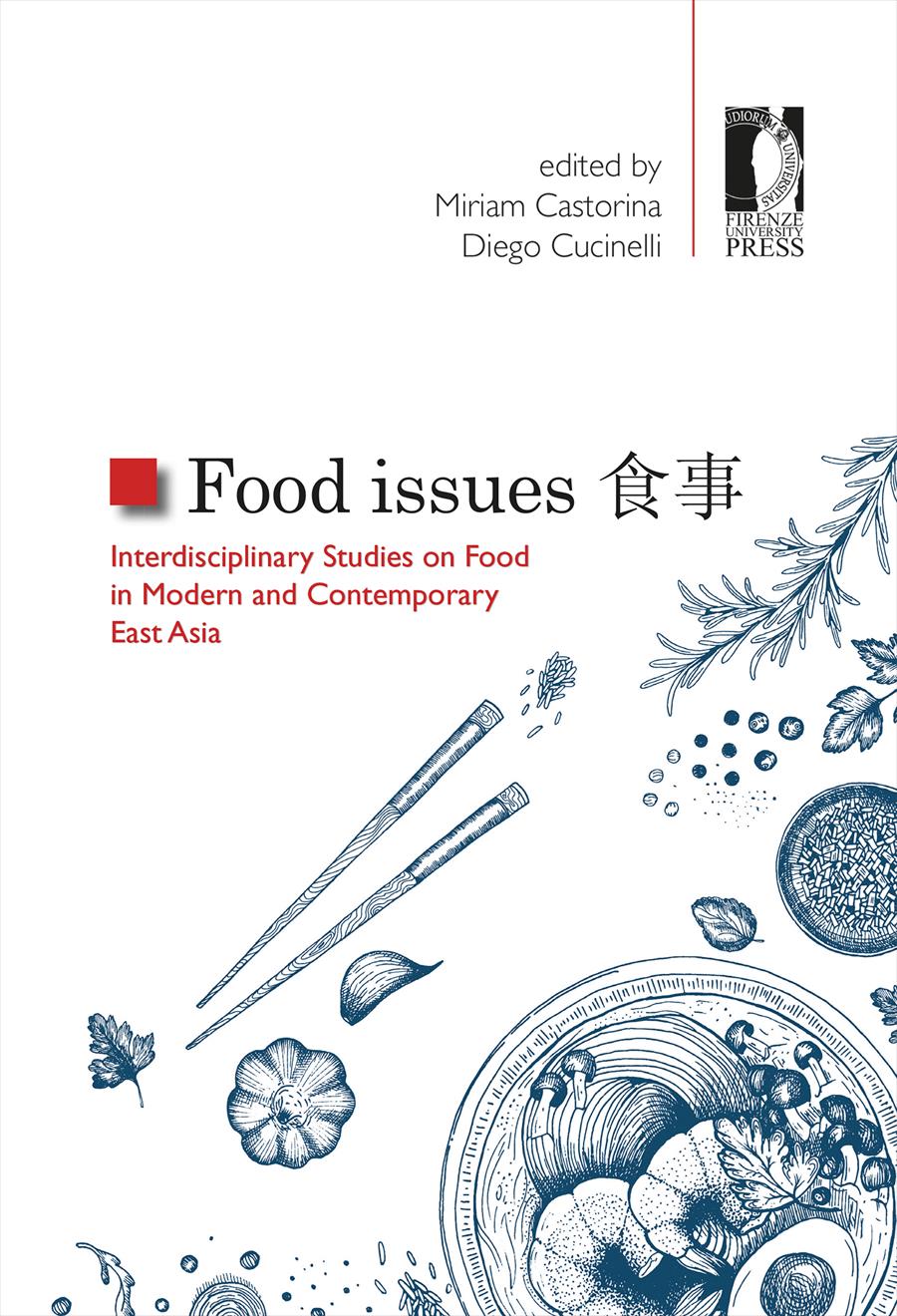- Food issues 食事
- Edited by Miriam Castorina, Diego Cucinelli
Japanese shōjin ryōri: the green competition from Buddhist temples to TV shows
- Chiara Ghidini
- © 2021 Author(s) |
- CC BY 4.0
- DOI: 10.36253/978-88-5518-506-6.04
Registered in 2013 by the United Nations Education, Scientific and Cultural Organization (UNESCO) as Intangible Cultural Heritage, washoku, the “traditional dietary cultures of the Japanese,” includes the so-called shōjin ryōri, an expression dated to the early modern period and related to the Buddhist avoidance of meat eating. Since its early appearance, shōjin ryōri has undergone a variety of changes, and its evolution up to contemporary times is relevant to Japan’s cultural history. Traditionally, vegetables (sōjimono) were not thought of as precious or tasty ingredients. However, during the Kamakura period (1185–1333), the introduction of vegetarian dishes made to resemble fish and fowl, both in shape and flavor -- the so-called modoki ryōri-- attracted people's attention, contributing to the spread within Kyoto and the Japanese archipelago of a tastier and aesthetically pleasing Buddhist vegetarian cuisine. Throughout the 15th century local specialties and banquet cooking culture were extremely important: mountain products were generally still deemed inferior compared to sea and river ones, but in a text belonging to the irui gassen mono genre, the Shōjin gyorui monogatari, the reader witnesses the triumph of vegetables over the army of fish and animals. During the Meiji era (1868–1912), Buddhist vegetarianism faced the rise of a different culinary culture, whereby eating (beef) meat turned into a symbol for physical strength, both the individual one of young male citizens and the collective one of Japan as a new-born nation. Even part of the Buddhist clergy chose to embrace the meat-eating culture. Today, shōjin ryōri coexists with vegetarian choices based on different theoretical tenets and is promoted by NHK Television within programs designed for a global audience and aimed to advocate the Cool Japan strategy as well as in TV shows like Yamato amadera shōjin nikki, focused on the everyday (cooking) life of Buddhist nuns in a secluded temple within Nara prefecture. While encouraging local (and Buddhist) vegetarian food literacy, this program also fulfills the government agenda in terms of rural rejuvenation policies and the promotion of washoku (which includes shōjin ryōri) as a brand to be popularized both within and outside Japan.
- Keywords:
- Buddhist vegetarian cuisine,
- rural rejuvenation,
- Buddhist temples,
- NHK Television,
University of Naples L'Orientale, Italy - ORCID: 0000-0003-3864-2490
- Bestor, Theodore C. 2018. “Washoku, Far and Near: UNESCO, Gastrodiplomacy, and the Cultural Politics of Traditional Japanese Cuisine.” In Devouring Japan: Global Perspectives on Japanese Culinary Identity, edited by Nancy K. Stalker, 99–117. New York: Oxford University Press.
- Cogan, Gina. 2006. “Time Capsules for Tradition: Repositioning Imperial Convents for the Meiji Period.” U.S.-Japan Women’s Journal 30/31: 80–1.
- Follador, Elena. 2020. “Re-contextualizing Shōjin gyorui monogatari, or When the Fish Declared War on the Greens.” Japan Review 35: 31–58.
- Jaffe, Richard M. 2005. “The Debate over Meat Eating in Japanese Buddhism.” In Going Forth: Visions of Buddhist Vinaya, edited by William M. Bodiford, 255. Honolulu: University of Hawaii Press.
- Jaffe, Richard M. 2021. Neither Monk nor Layman: Clerical Marriage in Modern Japanese Buddhism. Princeton: Princeton University Press.
- Kazuaki, Komine. 2010. 小峯和明, “Otogizōshi to kyōgen: Ryōri, irui, ronsō” お伽草子と狂言: 料理・異類・争論, Ajia bunka kenkyū bessatsu アジア文化研究 別冊 18: 15–21.
- Kenji, Miyazawa. 2012. The Frandon Agricultural School Pig, translated by Roger Pulvers, illustrated by Alice Pulvers. Rhinoceros Publishing.
- Kilpatrick, Helen. 2013. Miiyazawa Kenji and His Illustrators: Images of Nature and Buddhism in Japanese Children’s Literature. Leiden-Boston: Brill.
- Mami, Inoue. 2019. 井上 真美, “Shōjin ryōri 精進料理.” In Nihon bunkashi kenkyū no kisoteki shiryō ni tsuite 日本食文化史研究 の基礎的史料について, edited by Kyōto washoku bunka kenkyū sentā京都和食文化研究センター, Kyōto furitsu daigaku gakujutsu hōkoku京都府立大学学術報告 71: 25–8.
- Marra, Claudia. 2011. “Fucha Ryōri:The Monastic Cuisine of the Ōbaku-Zen School.” The Journal of Nagasaki University of Foreign Studies 15: 215–32.
- Naoki, Haruta春田直紀. 2008. “Mono kara mita jūgo seiki no shakai” モノからみた一五世紀の社会. Nihonshi kenkyū 日本史研究 546: 22–45.
- Pulvers, Roger. 2013. “Miyazawa Kenji’s Prophetic Green Vision: Japan’s Great Writer/Poeton the 80th Anniversary of His Death.” The Asia-Pacific Journal 11, 44 (2)
- Rath, Eric. 2010. Food and Fantasy in Early Modern Japan. Berkeley-Los Angeles-London: University of California Press.
- Rausch, Anthony. 2017. “A Paradox of Japanese Taxation: Analyzing the Furusato Nozei Tax System.” The Asia-Pacific Journal | Japan Focus 15, 11 (6)
- Sato, Hiroaki. edited by. 2007. Miyazawa Kenji Selections. Berkeley-Los Angeles-London: University of California Press.
- Shirane, Haruo. edited by. 2007. Traditional Japanese Literature. An Anthology, Beginnings to 1600. New York: Columbia University Press.
- Stone, Jacqueline I. 2019. “Tanaka Chigaku on ‘The Age of Unification’.” In Pure Lands in Asian Texts and Contexts: An Anthology, edited by Georgios T. Halkias, Richard K.Payne, 631–60. Honolulu: University of Hawaii Press.
- Ueda, Jun’ichi 上田純一 .2017. “Tsukurimono aruiwa Mitate to shite no shōjin ryōri「つくりもの」あるいは「見立て」としての精進料理.” In Kyōryōri no bunkashi京料理の文化史, edited by Ueda Jun’ichi, 177–80. Kyōto: Shibunkaku shuppan.
Chapter Information
Chapter Title
Japanese shōjin ryōri: the green competition from Buddhist temples to TV shows
Authors
Chiara Ghidini
Language
English
DOI
10.36253/978-88-5518-506-6.04
Peer Reviewed
Publication Year
2021
Copyright Information
© 2021 Author(s)
Content License
Metadata License
Bibliographic Information
Book Title
Food issues 食事
Book Subtitle
Interdisciplinary Studies on Food in Modern and Contemporary East Asia
Editors
Miriam Castorina, Diego Cucinelli
Peer Reviewed
Number of Pages
202
Publication Year
2021
Copyright Information
© 2021 Author(s)
Content License
Metadata License
Publisher Name
Firenze University Press
DOI
10.36253/978-88-5518-506-6
ISBN Print
978-88-5518-505-9
eISBN (pdf)
978-88-5518-506-6
eISBN (epub)
978-88-5518-507-3
Series Title
Studi e saggi
Series ISSN
2704-6478
Series E-ISSN
2704-5919
